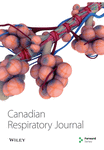Comparison of Once- with Twice-Daily Dosing of Fluticasone Propionate in Mild and Moderate Asthma
Abstract
OBJECTIVES: Two 12-week, randomized, double-blind, parallel-group studies were performed to compare the efficacy and safety of once- and twice-daily dosing of fluticasone propionate (FP) in the treatment of mild to moderate asthma, considered to require the equivalent of either 200 or 500 µg of FP daily.
PATIENTS AND METHODS: In study A, 461 patients with asthma received FP either 200 µg once daily or 100 µg twice daily. In study B, 443 patients with asthma received FP, either 500 µg once daily or 250 µg twice daily.
RESULTS: In both studies, regardless of the treatment regimen to which patients were randomly assigned, small improvements over baseline were observed in morning peak expiratory flows (PEF) and forced expiratory volume in 1 s (FEV1) following 12 weeks of treatment. In study A, the mean morning PEF improved by 2.4% and 4.3% (once daily versus twice daily, P=0.008). In study B, the mean morning PEF improvement was 0.2% and 3.7% (once daily versus twice daily, PÃ0.001). For both studies, the increases observed in FEV1 were not significantly different between the two groups (P = not significant). The incidence of exacerbations of asthma and related events was 13% and 5%, respectively, in the patients with mild asthma for the once-daily group versus the twice-daily group; these exacerbations were 12% and 10%, respectively, in patients with moderate asthma. Otherwise, the incidence and types of adverse events were comparable for the two treatment regimens. Although twice-daily dosing demonstrated small but statistically significant improvements over once-daily dosing, patients of both groups generally maintained a good level of asthma control on both regimens according to current treatment guidelines.
CONCLUSIONS: Twice-daily dosing of FP is more effective than once-daily dosing, although the latter can maintain asthma control in most patients.




